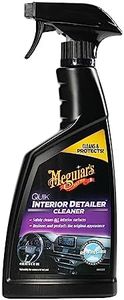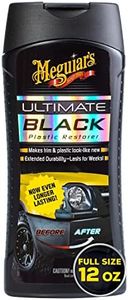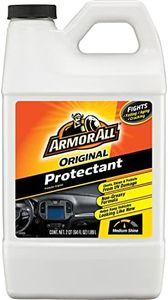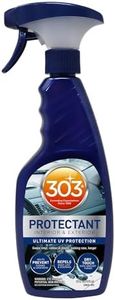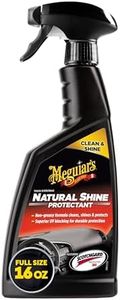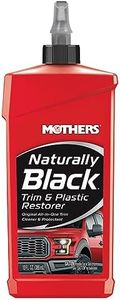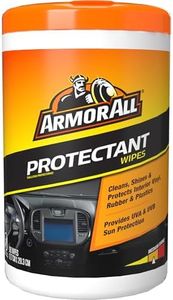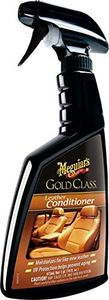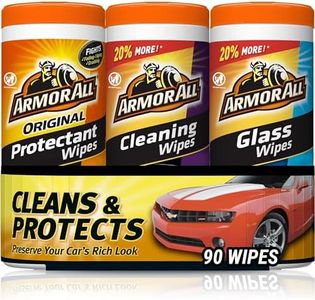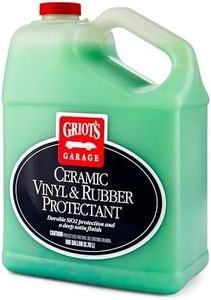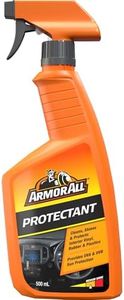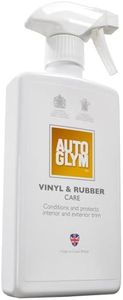We Use CookiesWe use cookies to enhance the security, performance,
functionality and for analytical and promotional activities. By continuing to browse this site you
are agreeing to our privacy policy
10 Best Car Interior Protectants
From leading brands and best sellers available on the web.By clicking on a link to a third party's website, log data is shared with that third party.
Buying Guide for the Best Car Interior Protectants
When choosing a car interior protectant, the goal is to keep your vehicle's inside surfaces—such as dashboard, door panels, and seats—in the best possible condition. Protectants can help maintain the original look, prevent fading or cracking, and make cleaning easier. Picking the right protectant depends on the type of surfaces you need to treat and what level of shine, protection, and ease-of-use you prefer. It's important to know the specific characteristics of protectants so your choice matches your car's materials and your needs for appearance and maintenance.Surface CompatibilitySurface compatibility refers to which materials the protectant is designed for, such as plastic, vinyl, leather, or rubber. It's important because using a product not suitable for your surface can cause discoloration or damage. Some products are all-in-one for multiple surfaces, while others are specialized. To pick the right one, check what material you most need to protect and check the product label to match. For example, if you have leather seats, use a leather-specific protectant for best care and longevity.
Finish Type (Shine Level)Finish type or shine level is how the surface looks after you apply the protectant—ranging from high-gloss or shiny to satin or matte. This matters because while a glossy finish can make surfaces look 'like new,' it can also cause glare or feel sticky, whereas a matte finish looks more natural. To navigate this, consider if you prefer a shiny or subtle look. If you dislike glare on your dashboard, opt for a matte finish. If you want a more striking look, a gloss finish is better.
UV ProtectionUV protection indicates whether the product can shield your car's interior from sun damage. This is crucial because direct sunlight can cause fading, hardening, or cracking over time, especially in sunny climates. You’ll find some protectants provide basic cleaning without much UV protection, while others specifically highlight sun-blocking abilities. If you park outdoors or live in a sunny area, prioritize a protectant offering strong UV protection to keep surfaces from aging quickly.
Ease of ApplicationEase of application describes how simple and convenient it is to put the protectant on your surfaces. Some come as sprays, other as wipes or gels, and some need more buffing or drying time. For quick touch-ups or if you are often in a hurry, wipes or an easy-spray formula might suit you best. If you prefer a deeper clean and don't mind spending extra time, creams or gels can provide thorough coverage.
Residue and GreasinessResidue and greasiness is about whether the product leaves behind an oily, sticky, or slippery feeling after use. This matters for comfort and safety—too much residue can make surfaces look dirty, feel unpleasant, or even slippery (for steering wheels). Some people prefer a 'dry to the touch' finish. If you dislike any stickiness, look for fast-absorbing formulas that promise a clean or non-greasy finish.
ScentScent refers to any fragrance the protectant leaves behind. While some people enjoy a fresh or new-car smell, others may be sensitive to strong fragrances. You may find odor-free options, subtle scents, or noticeable perfumes. If you or your passengers are sensitive to smells, opt for fragrance-free or low-scent options.
